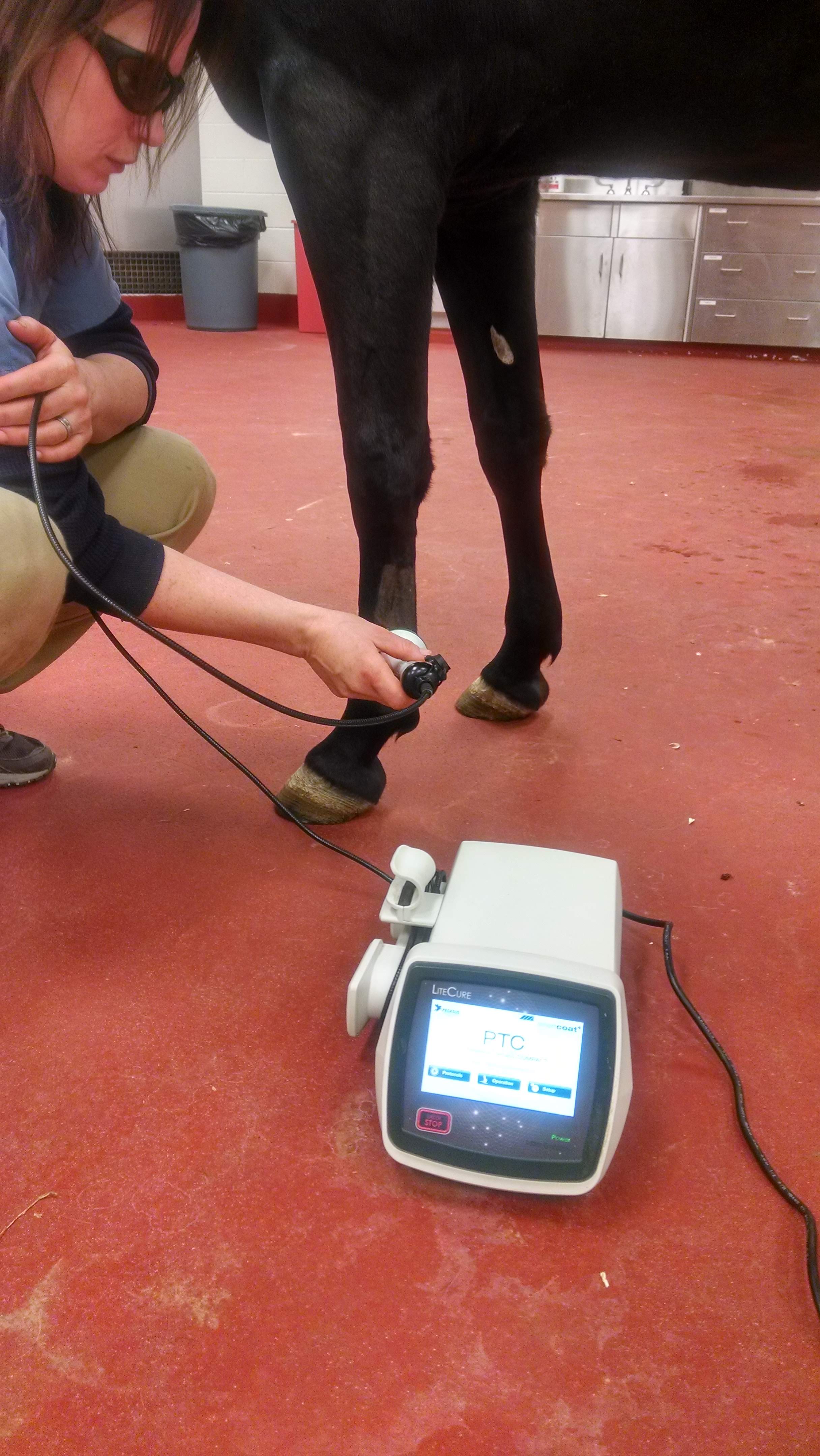Evaluating the Performance of Laser Therapy in Horse Treatment for Injury Rehab
The evaluation of laser treatment's performance in equine injury rehab rests on several variables, including recuperation time, pain reduction, and cells regeneration. Professional studies recommend notable enhancements in problems like tendonitis and osteoarthritis, credited to boosted cellular function and raised ATP manufacturing. Veterinarians often observe premium outcomes with laser treatment contrasted to conventional techniques, placing it as a crucial aspect in equine care. The necessity for continuous tracking and personalized therapy strategies can not be overstated. What particular scientific proof sustains these cases, and how do veterinarians execute these methods in technique?

Recognizing Laser Treatment
Laser treatment has become a pivotal device in vet medicine, particularly in the treatment of equine problems. Understood for its non-invasive nature and effectiveness, laser therapy involves the application of details wavelengths of light to boost cells repair work and reduce swelling. This healing modality is significantly favored for its capability to speed up the healing process in steeds suffering from a selection of bone and joint injuries and chronic conditions.
The primary system behind laser therapy is its capability to boost cellular features. Additionally, laser treatment advertises vasodilation, enhancing blood circulation and oxygen delivery to broken cells, thus accelerating recovery.
In equine medicine, laser treatment is particularly helpful for conditions such as tendonitis, osteoarthritis, and injury healing. The method is admired for its pain-relieving homes, permitting horses to restore flexibility and feature much more quickly. Vets additionally appreciate its very little side results contrasted to other treatment techniques, making it a reliable and safe choice for equine treatment.
Just How Laser Treatment Works
To understand exactly how laser therapy works, it is important to explore the interaction between light energy and biological tissues. Laser therapy, likewise understood as Low-Level Laser Treatment (LLLT) or photobiomodulation, uses details wavelengths of light to pass through cells and stimulate cellular processes. The mechanism hinges on the absorption of photons by cell chromophores, primarily within the mitochondria, which are crucial for energy production.
Upon absorption, these photons set off a series of biochemical changes, improving mitochondrial function and resulting in enhanced adenosine triphosphate (ATP) production. This rise in ATP accelerates cellular metabolism, advertising cells fixing and regrowth. Furthermore, laser therapy modulates inflammatory reactions by affecting cytokine degrees and lowering oxidative stress and anxiety, therefore relieving discomfort and swelling.
One more significant element of laser therapy is its duty in improving microcirculation. The treatment promotes vasodilation, boosting blood flow and oxygen delivery to broken tissues. This assists in the removal of mobile debris and sustains the proliferation of fibroblasts and collagen synthesis, vital for wound recovery.
Clinical Proof
The efficacy of laser therapy in equine therapy has actually been validated with various scientific researches, showcasing its healing possible throughout an array of problems. A study conducted by Turner et al. (2012) demonstrated that horses treated with low-level laser therapy (LLLT) for tendon injuries exhibited accelerated healing compared to those receiving conventional treatments.
In a similar way, research study by official source Johnson and colleagues (2015) concentrated on equine muscle mass injuries, disclosing that laser treatment significantly quickened muscle mass fiber regeneration and minimized muscle rigidity. Medical assessments have actually shown that laser therapy can alleviate persistent conditions such as osteo arthritis.
Vet Insights
Vet professionals have progressively identified the worth of laser therapy in equine treatment, mentioning both empirical proof and direct experience. Dr. Jane Smith, a leading equine vet, notes that laser therapy has shown exceptional efficiency in reducing inflammation and accelerating tissue repair service.
Vets likewise appreciate the flexibility of laser therapy. She points out that laser therapy can be customized to the details demands of each equine, making sure ideal results.

Practical Considerations
A vital element of implementing laser treatment in equine treatment entails recognizing the useful factors to consider that ensure its efficacy and safety and security. First and primary, it is essential to pick the proper laser tool, as different types vary in wavelength, power, and infiltration depth. Veterinarians need to be skilled in these specifications to tailor therapy methods successfully per injury kind
In addition, the regularity and duration of laser treatment sessions need mindful planning to take full advantage of restorative advantages while reducing any kind of possible adverse results. Regular tracking of the horse's feedback to treatment can direct necessary changes in the therapy regimen. Establishing a risk-free and controlled environment during treatments is additionally important to avoid unintended exposure to laser exhausts, which can damage both the steed and the handler.
Educating and accreditation of workers providing laser therapy are vital to guarantee appropriate technique and to promote safety and security requirements. Furthermore, preserving accurate documents of each session, consisting of laser settings and observed outcomes, is crucial for examining the total effectiveness of the therapy and for making data-driven choices.
Final Thought
Laser therapy has arised as go to website an effective method in equine injury recovery, using significant benefits in healing time, pain alleviation, and cells recovery. For optimum outcomes, continuous monitoring and personalized treatment procedures stay vital in leveraging the full potential of laser therapy in equine care.